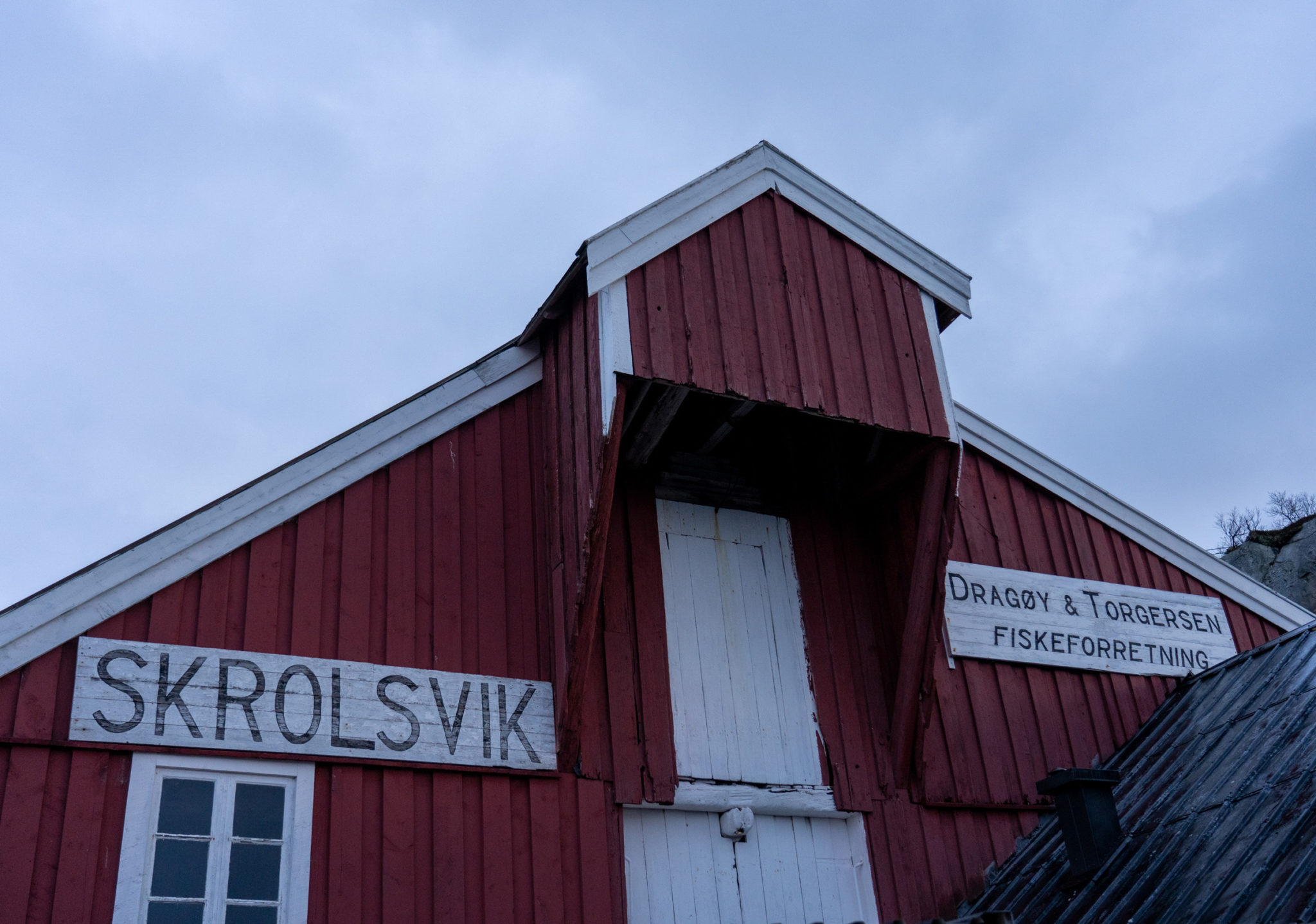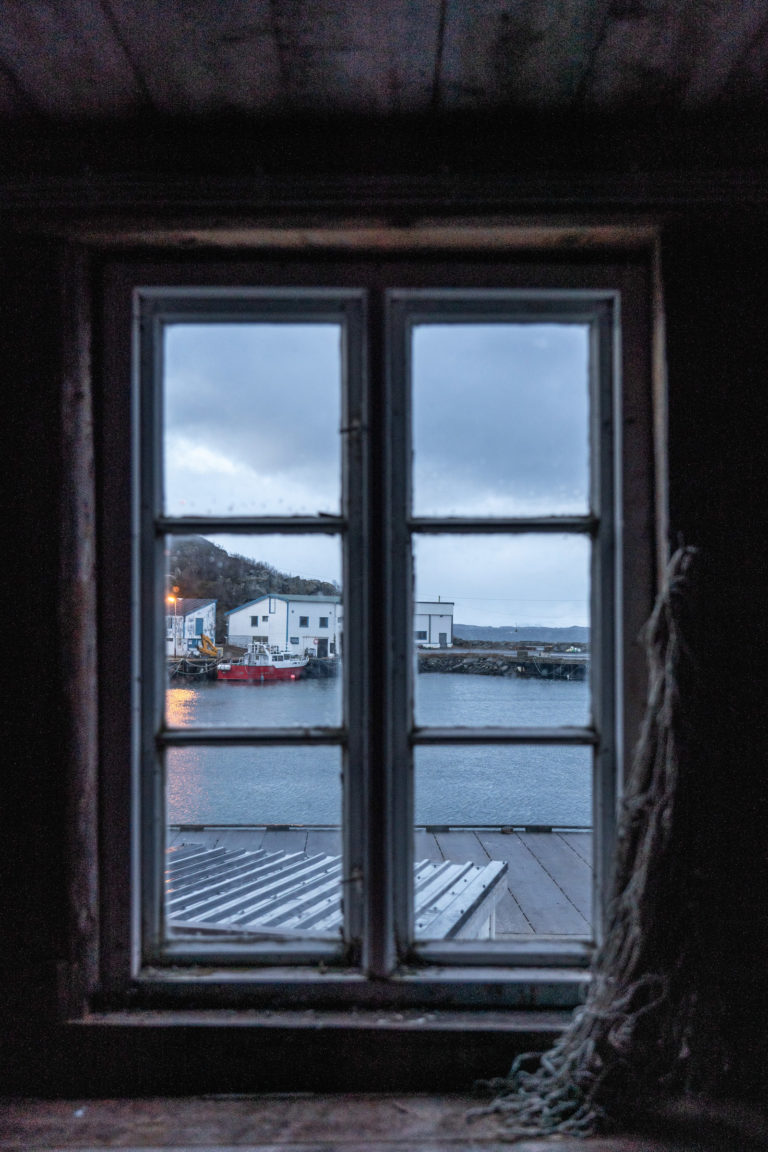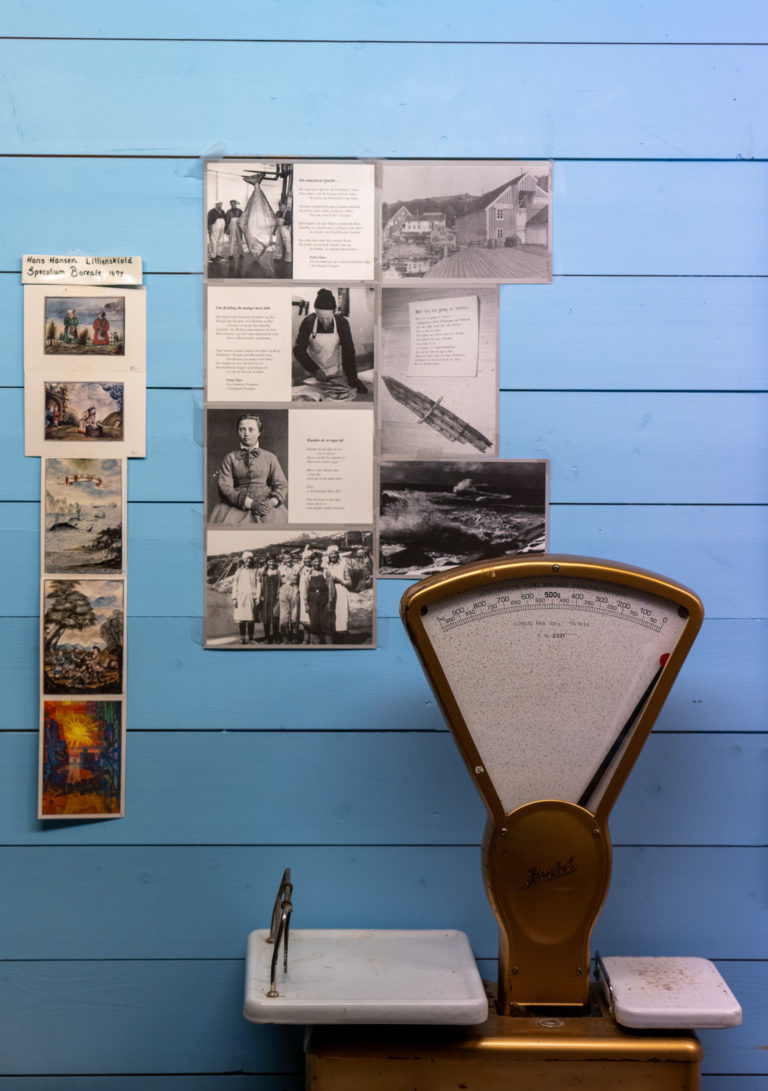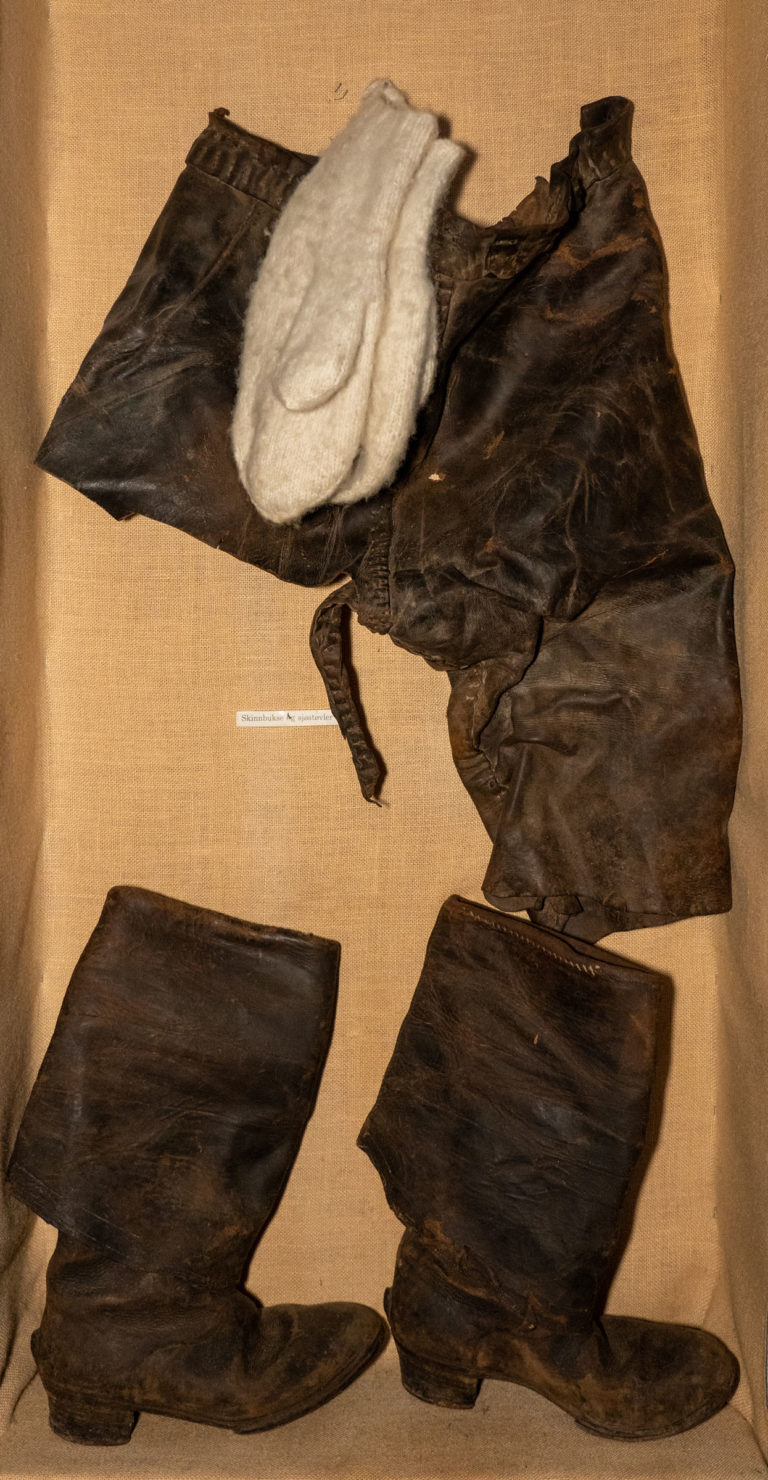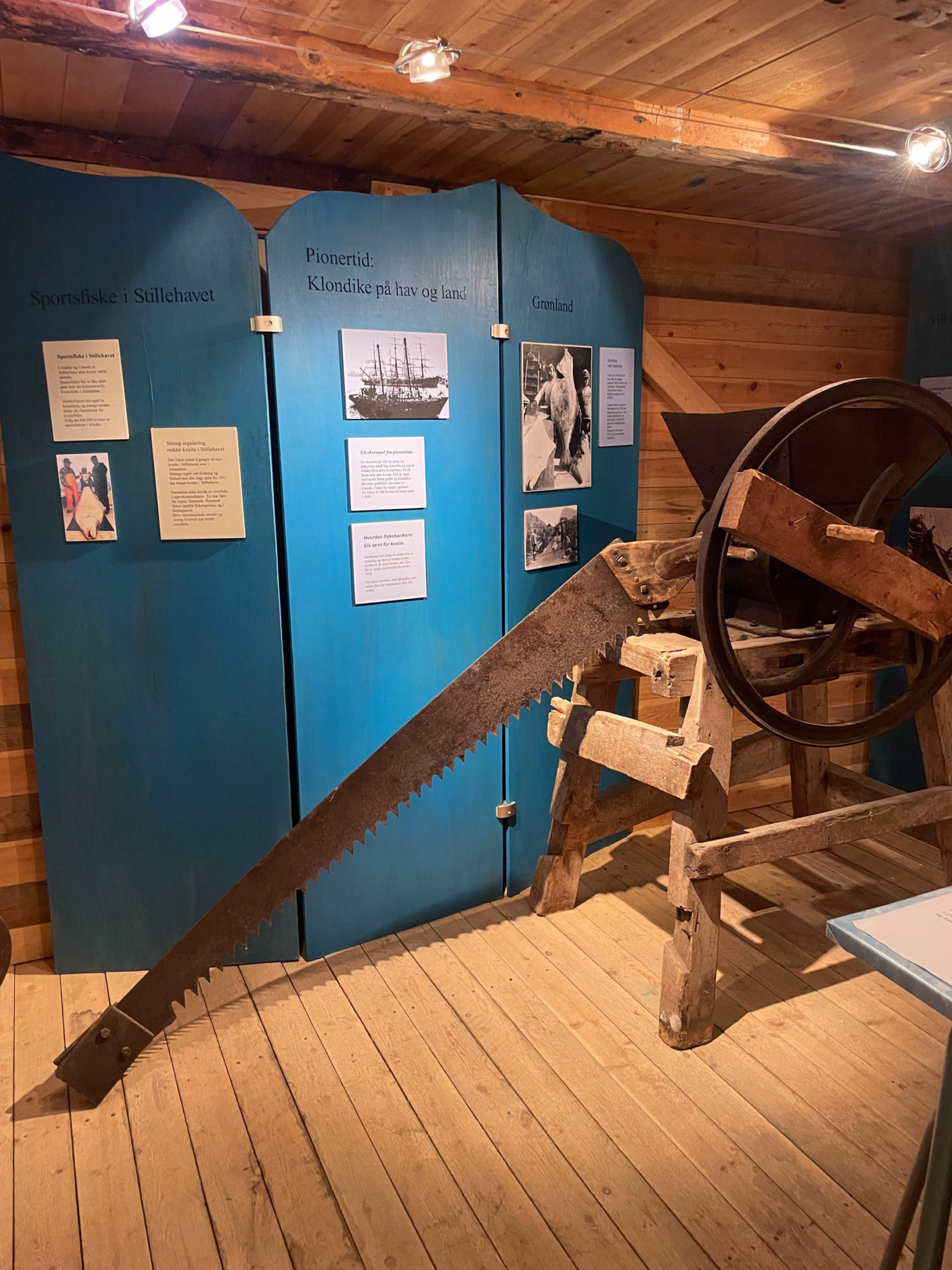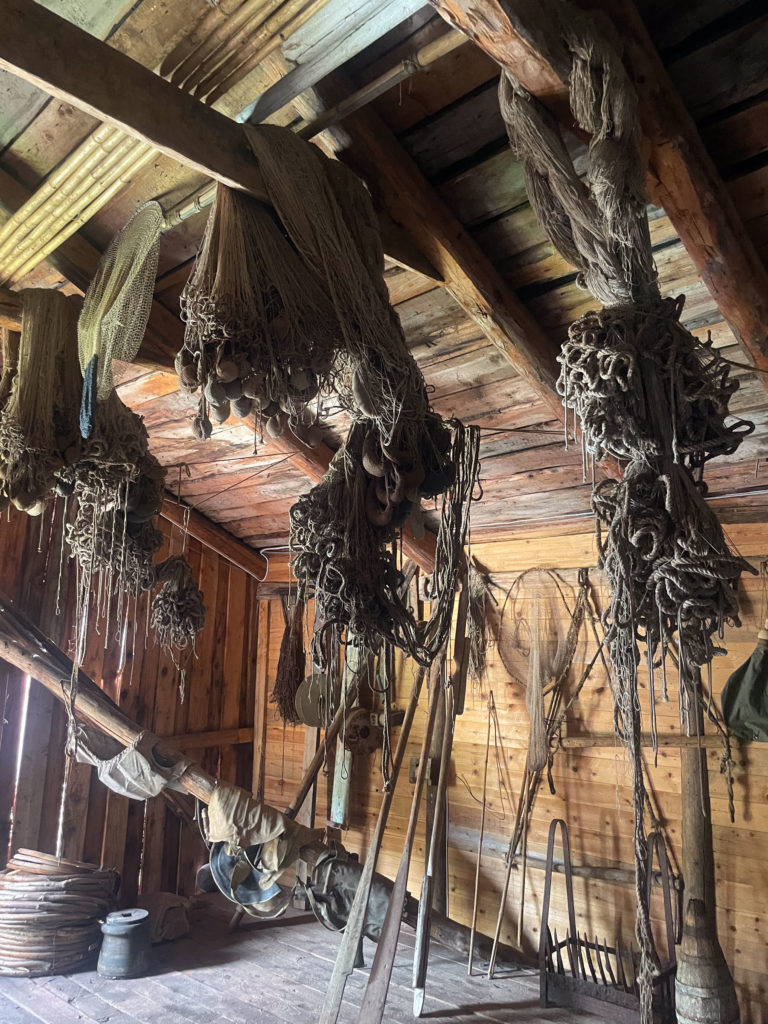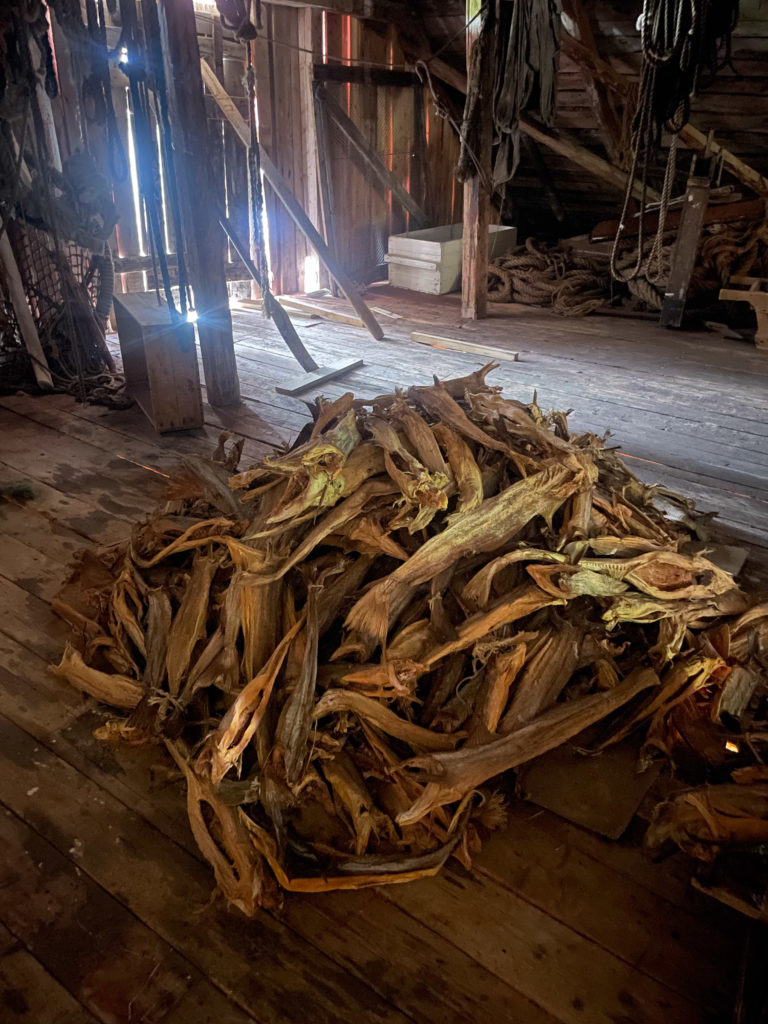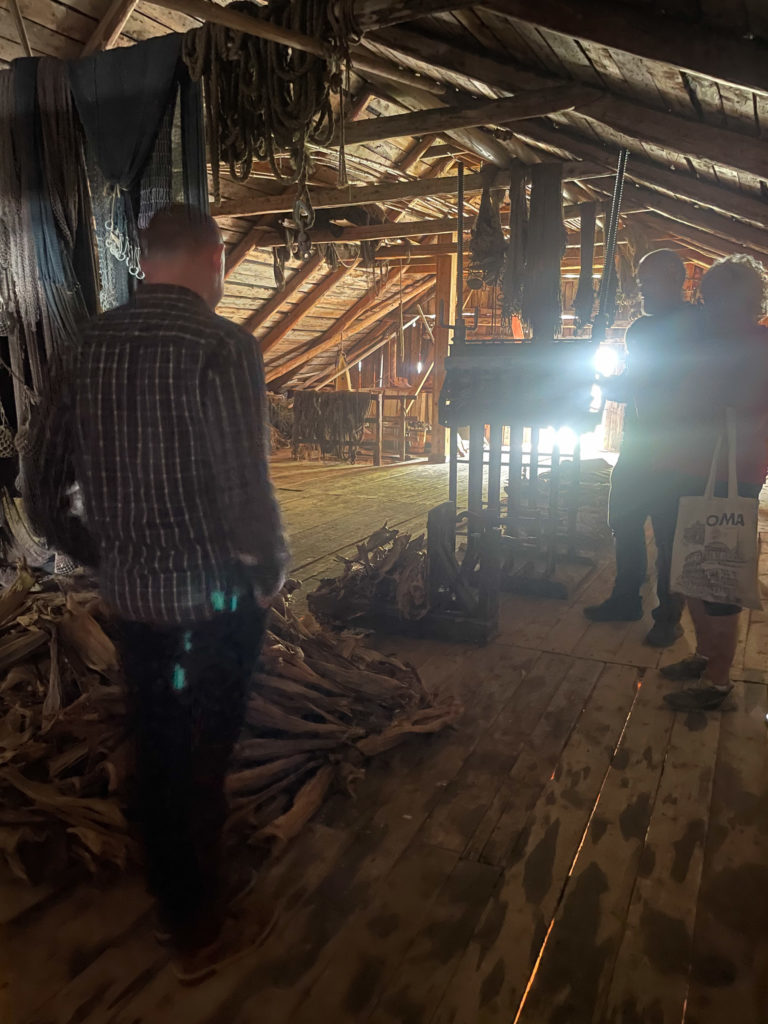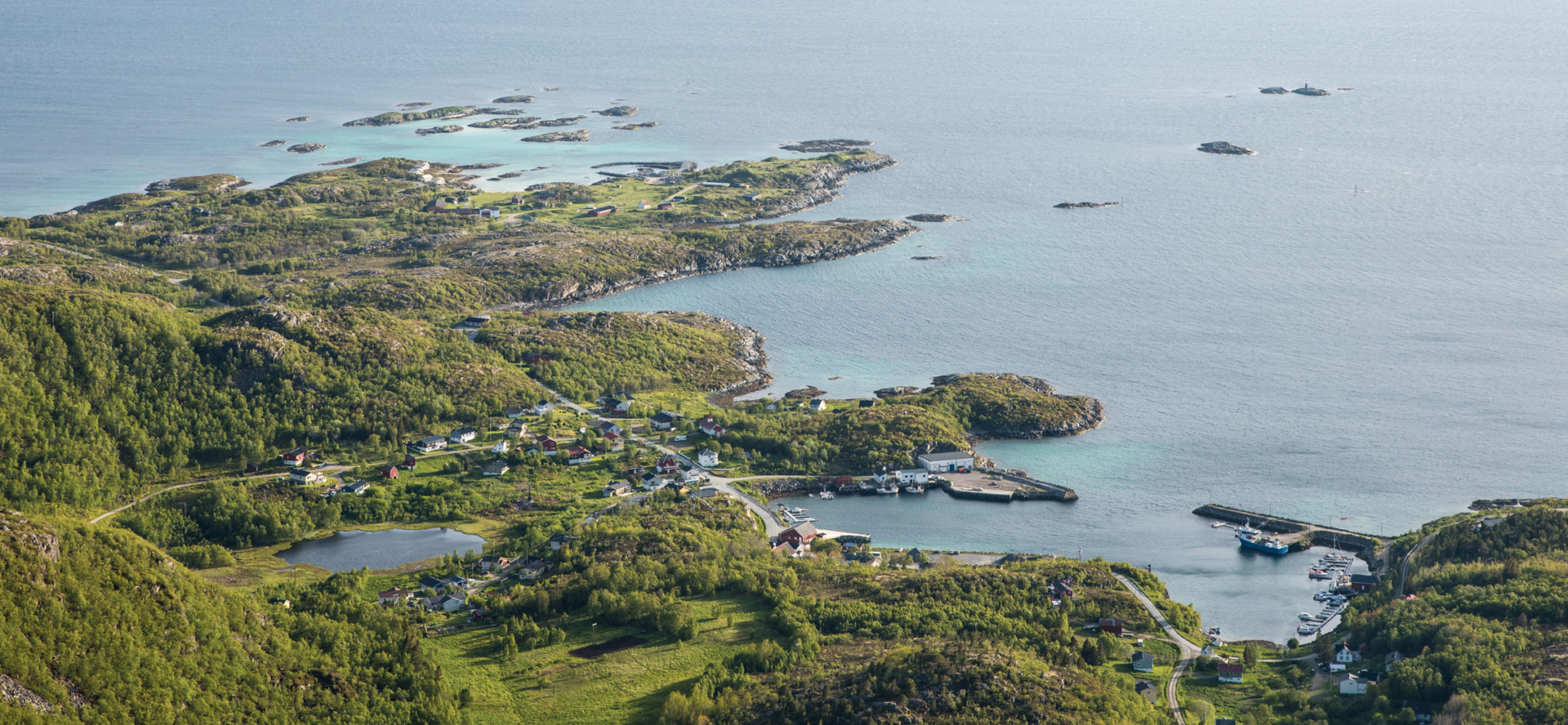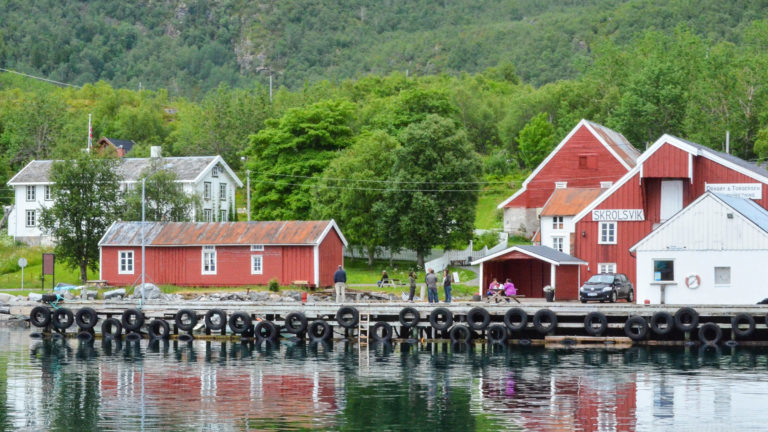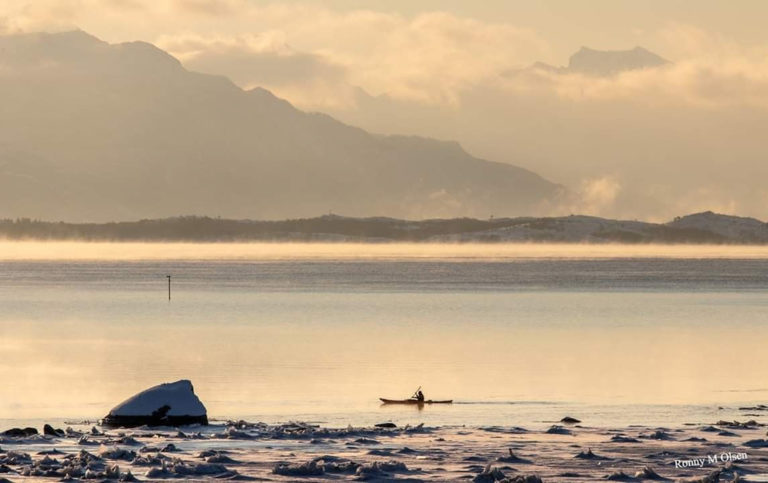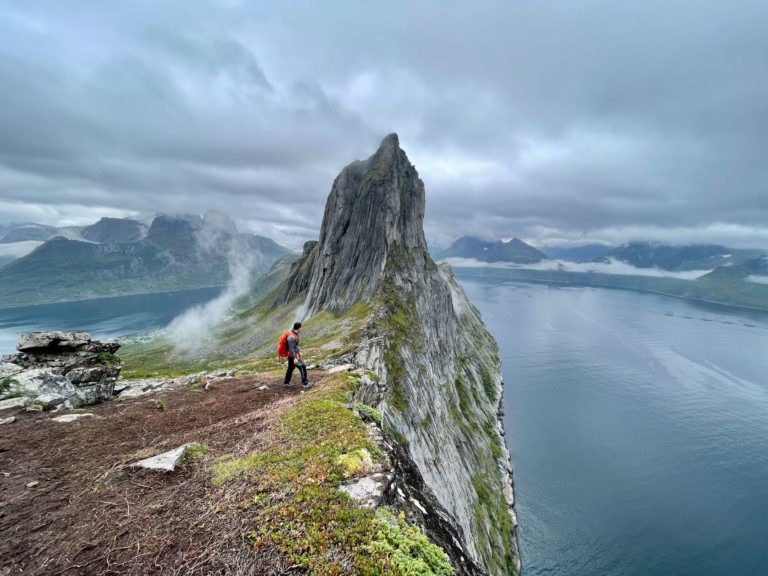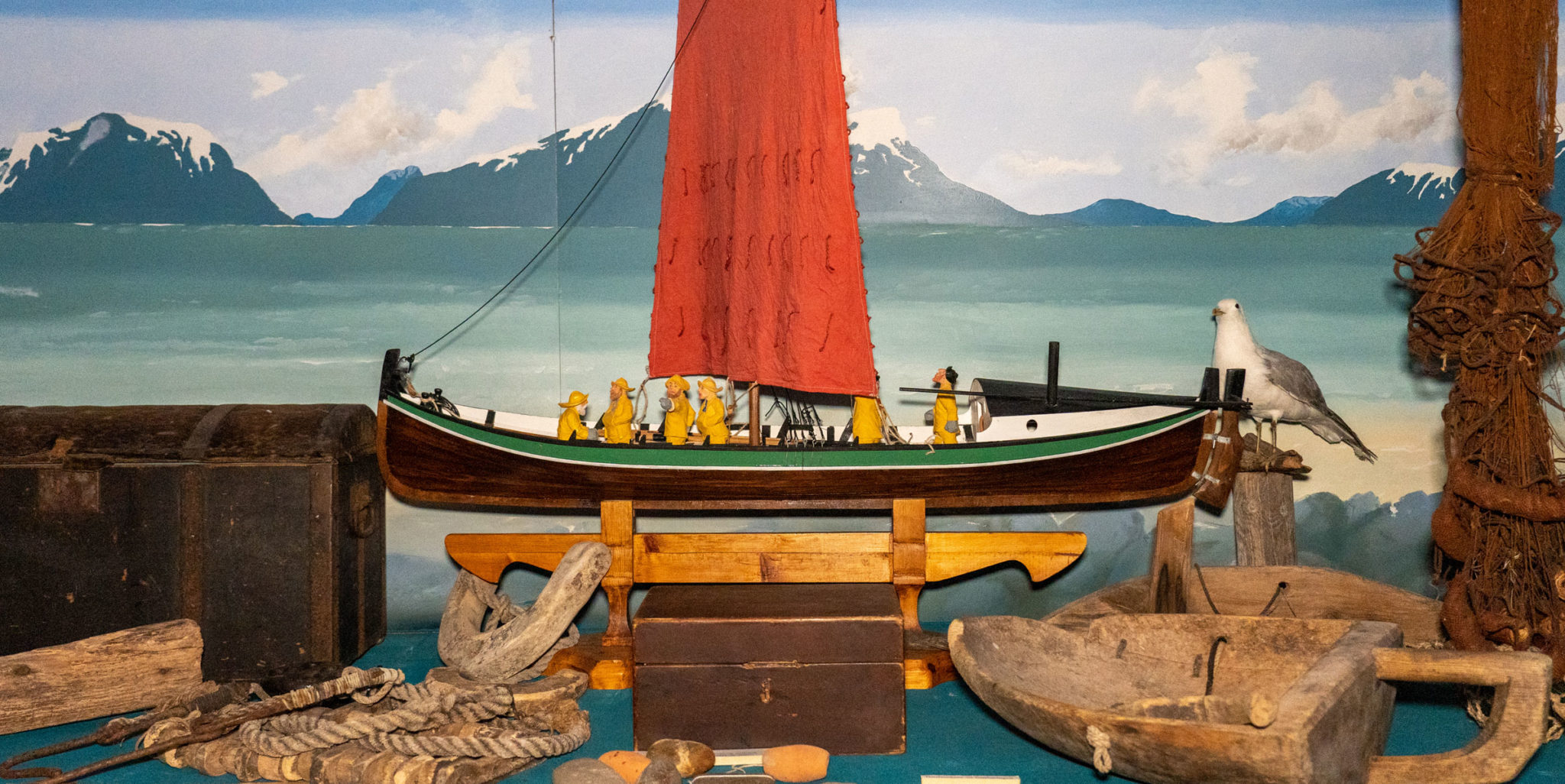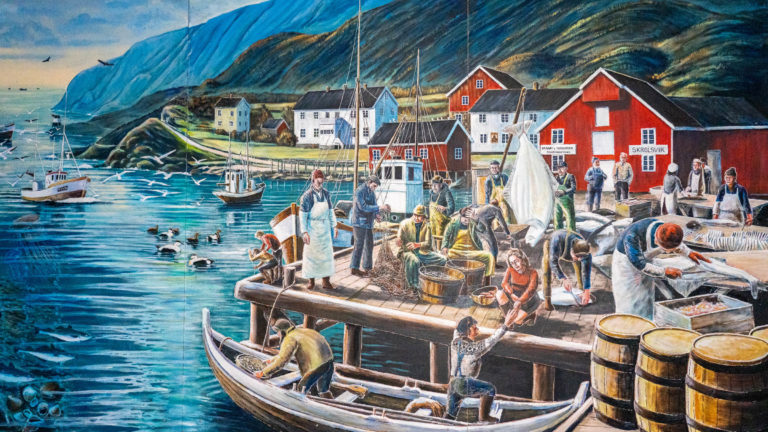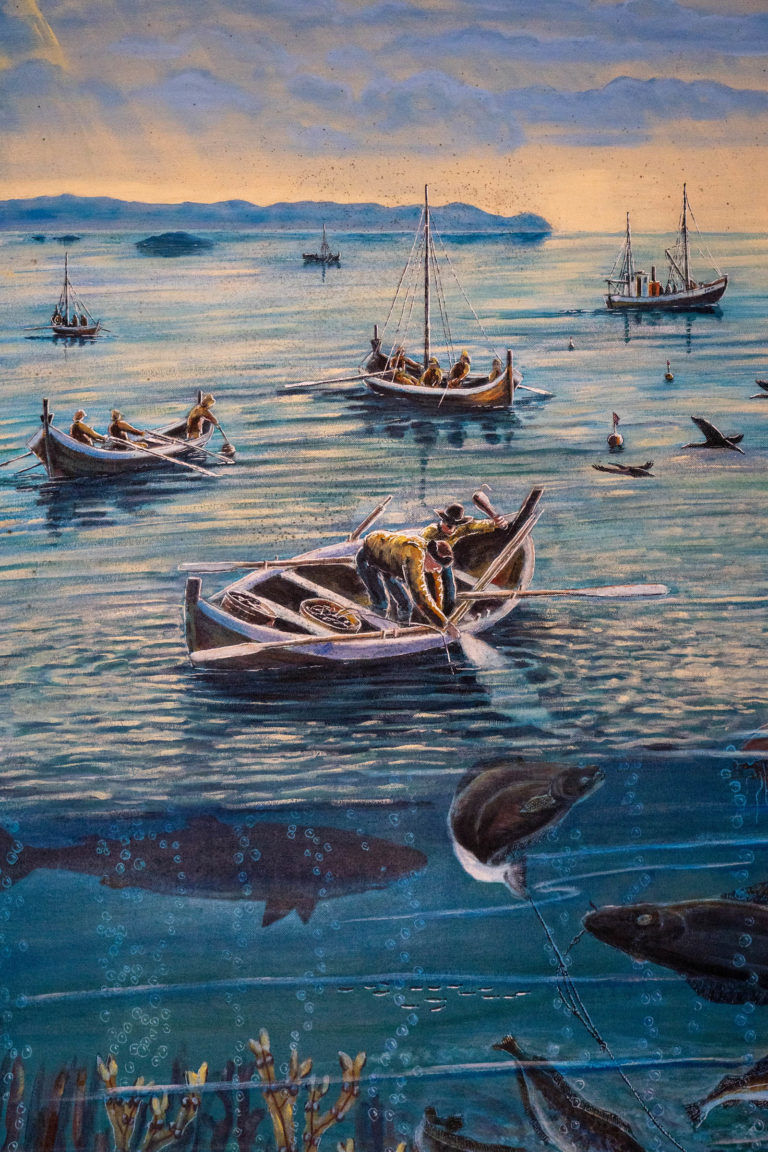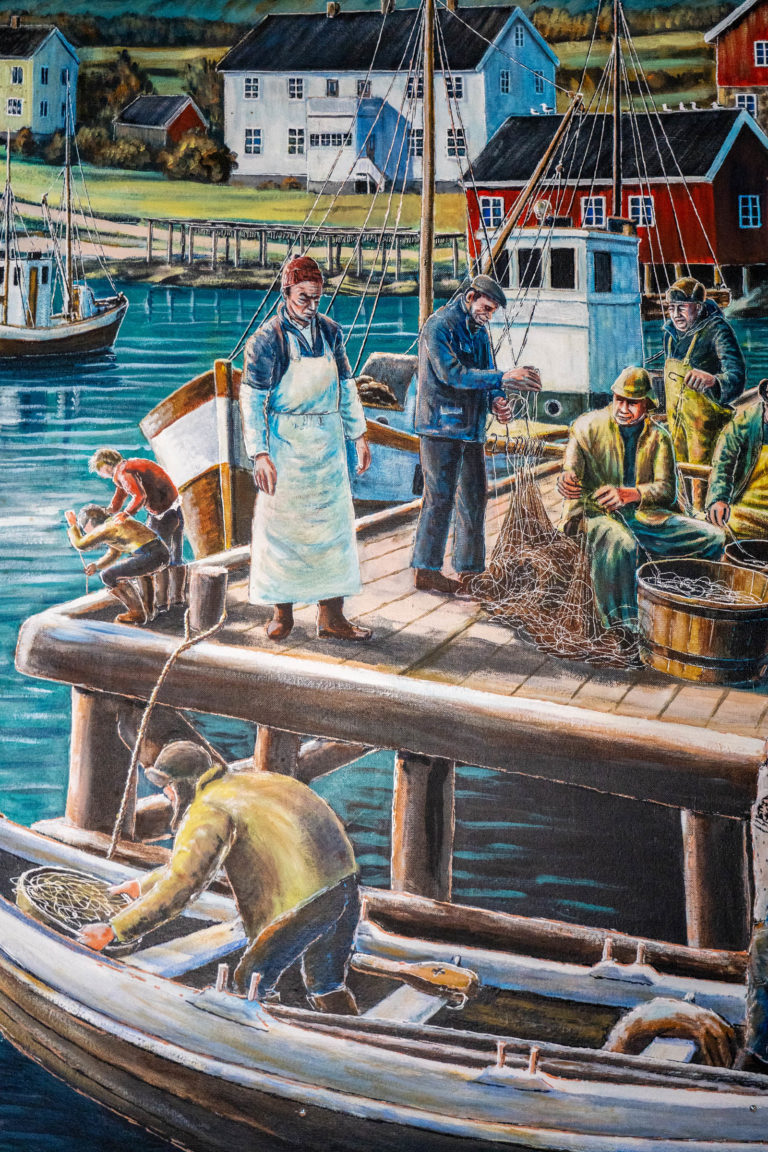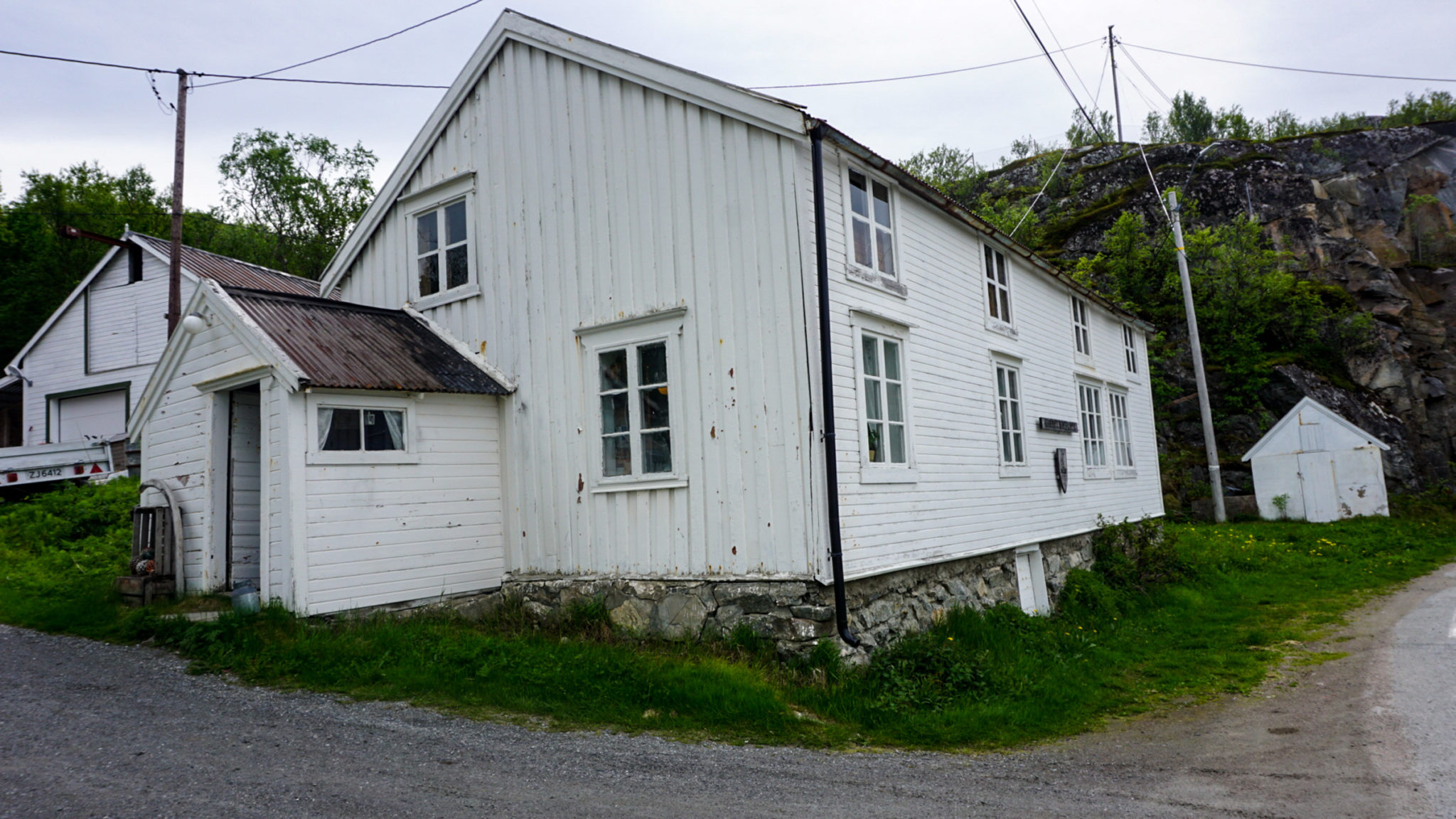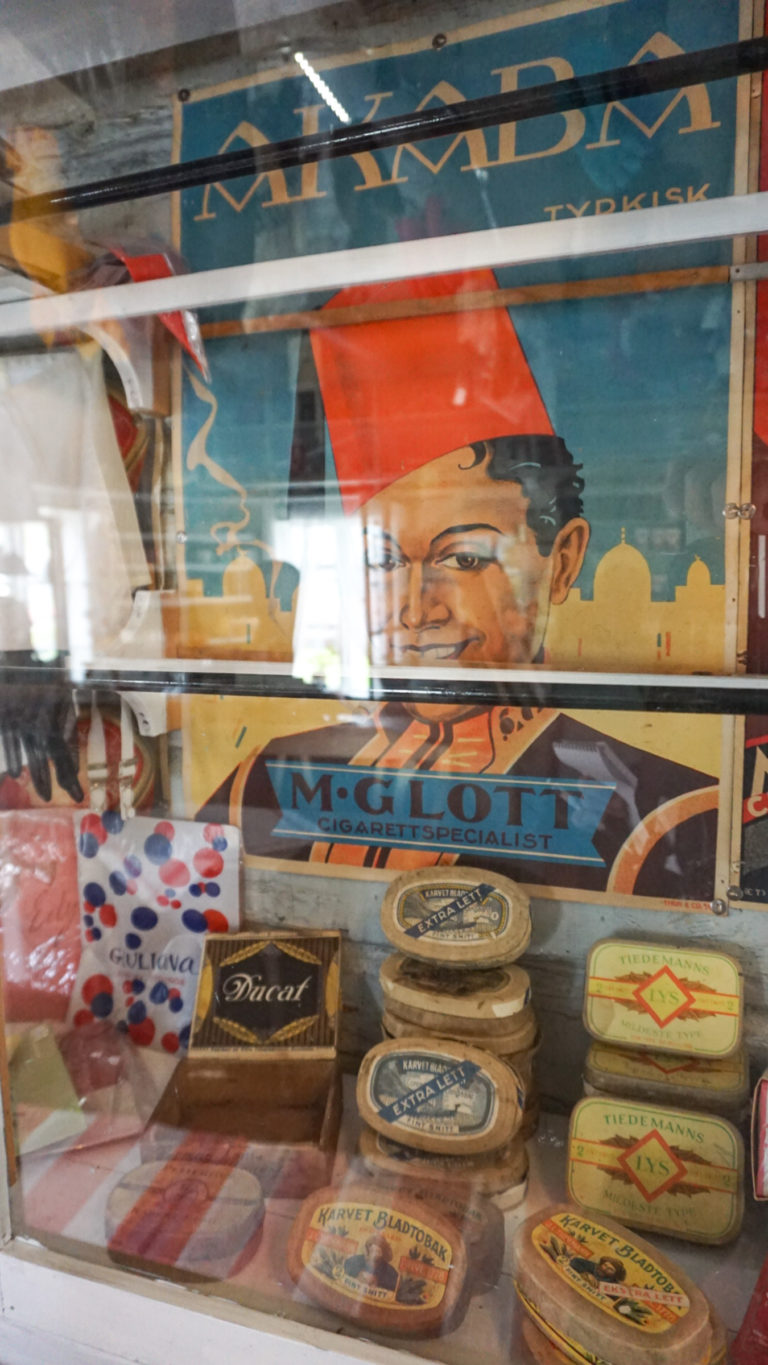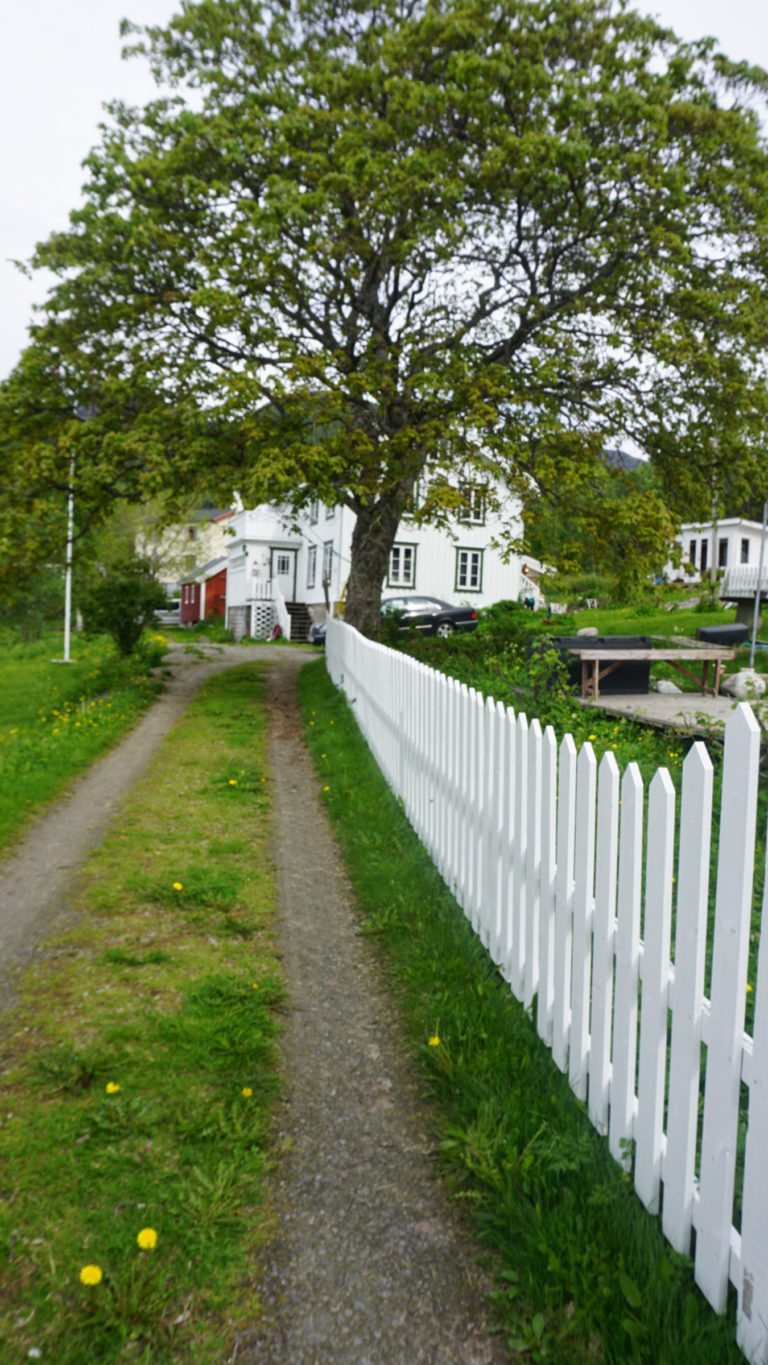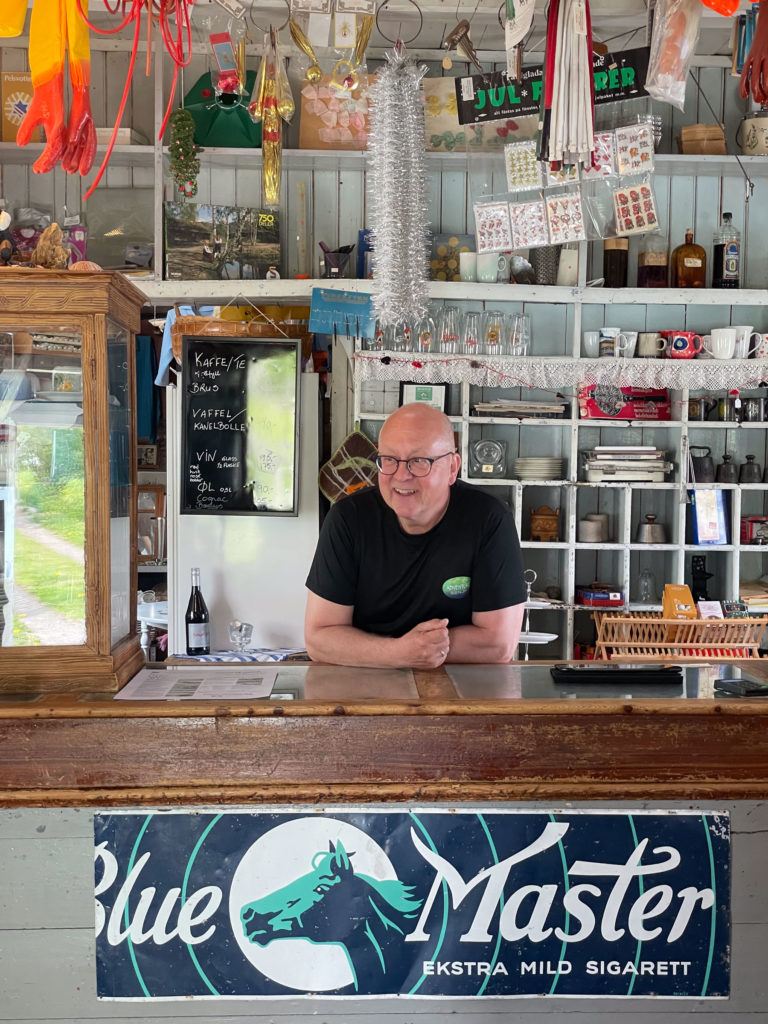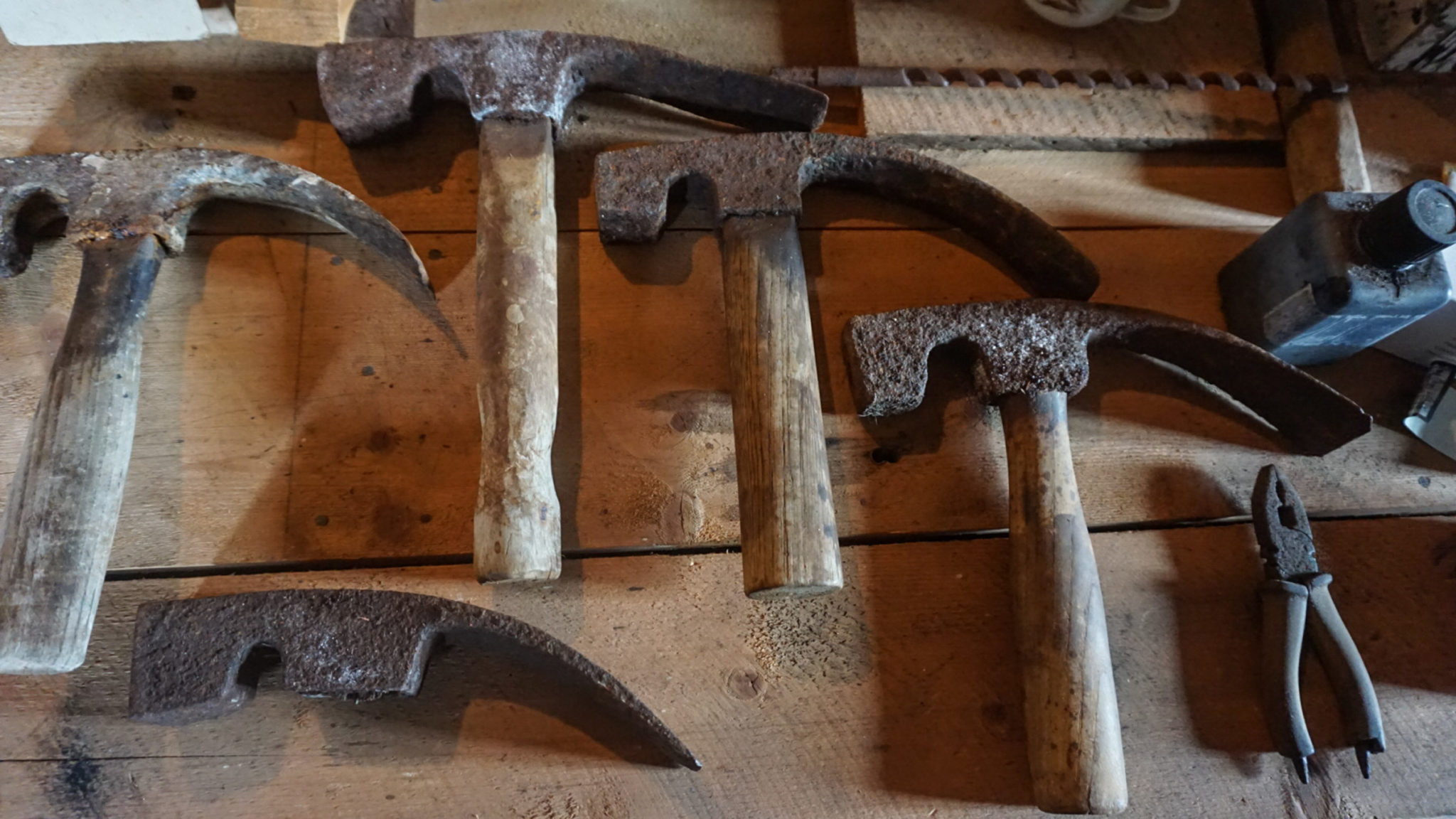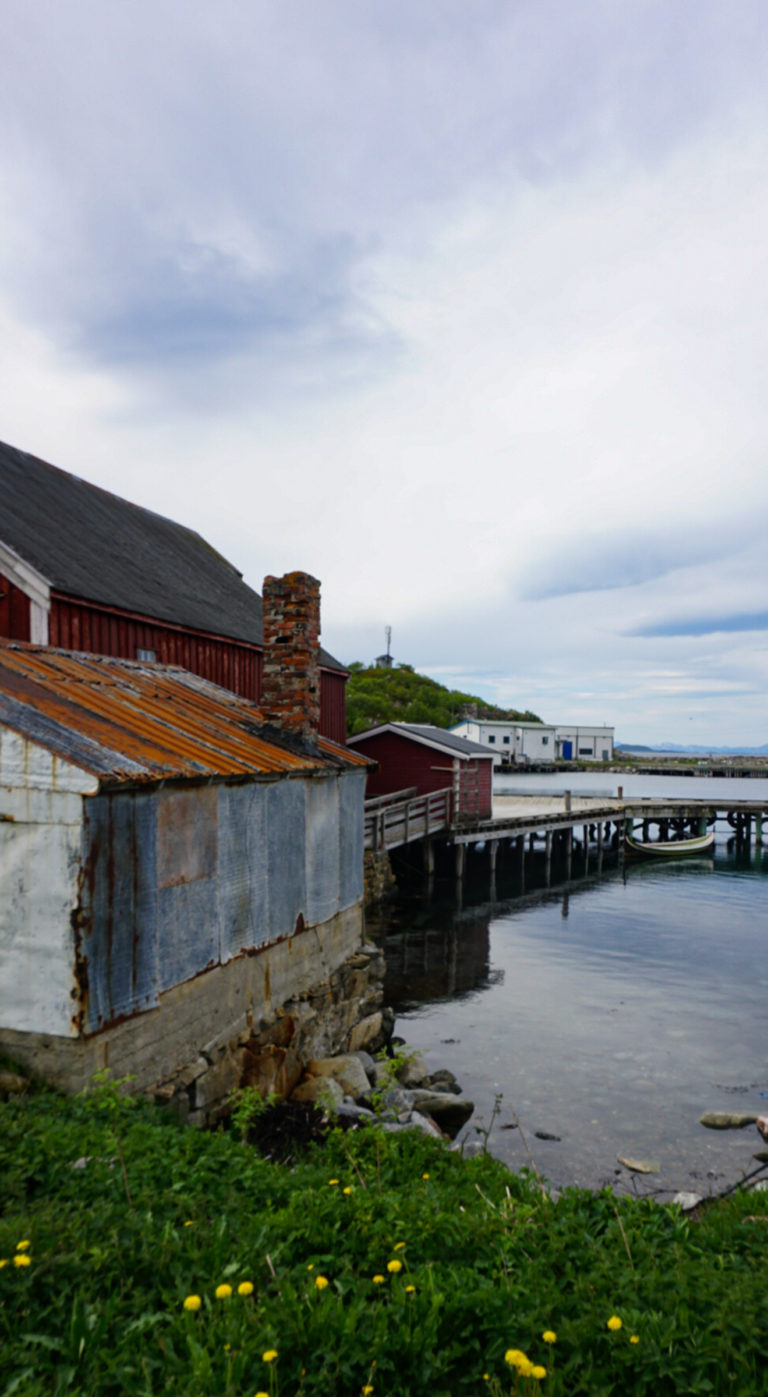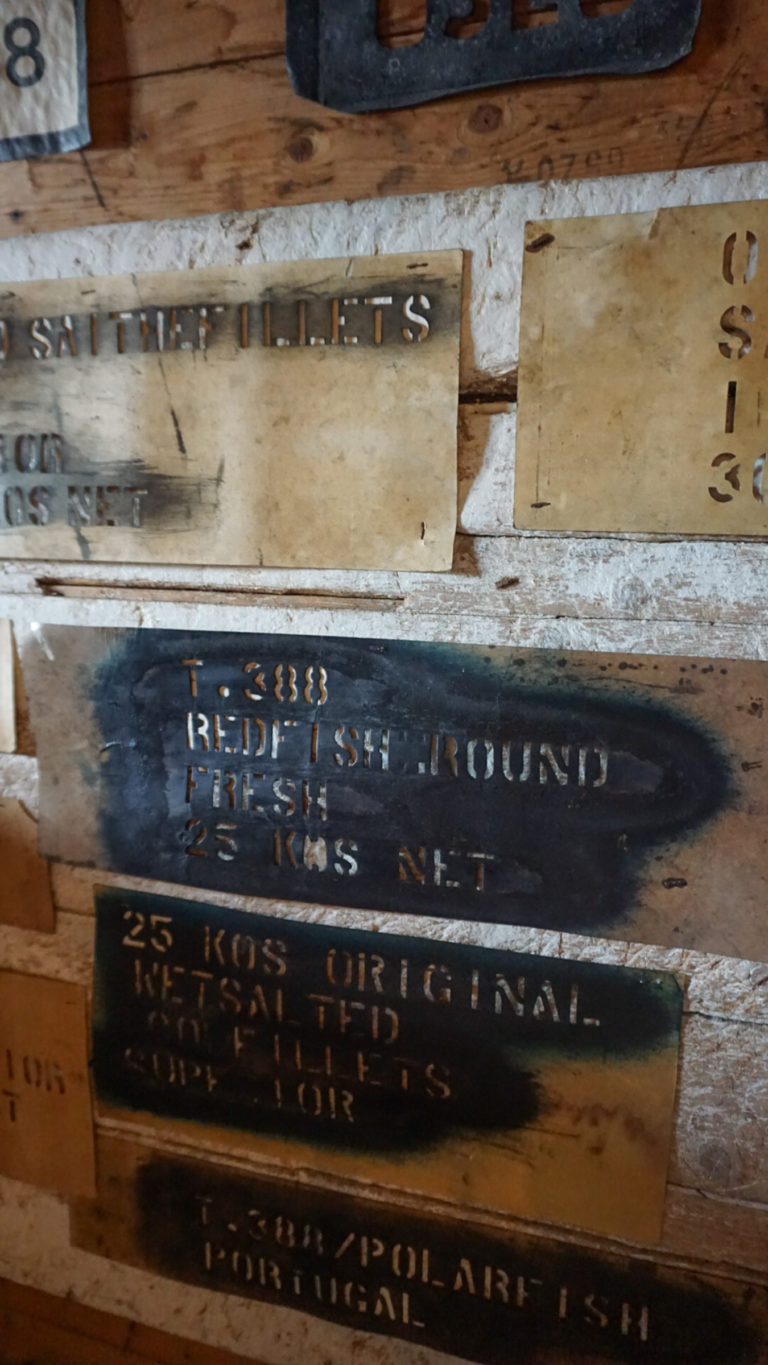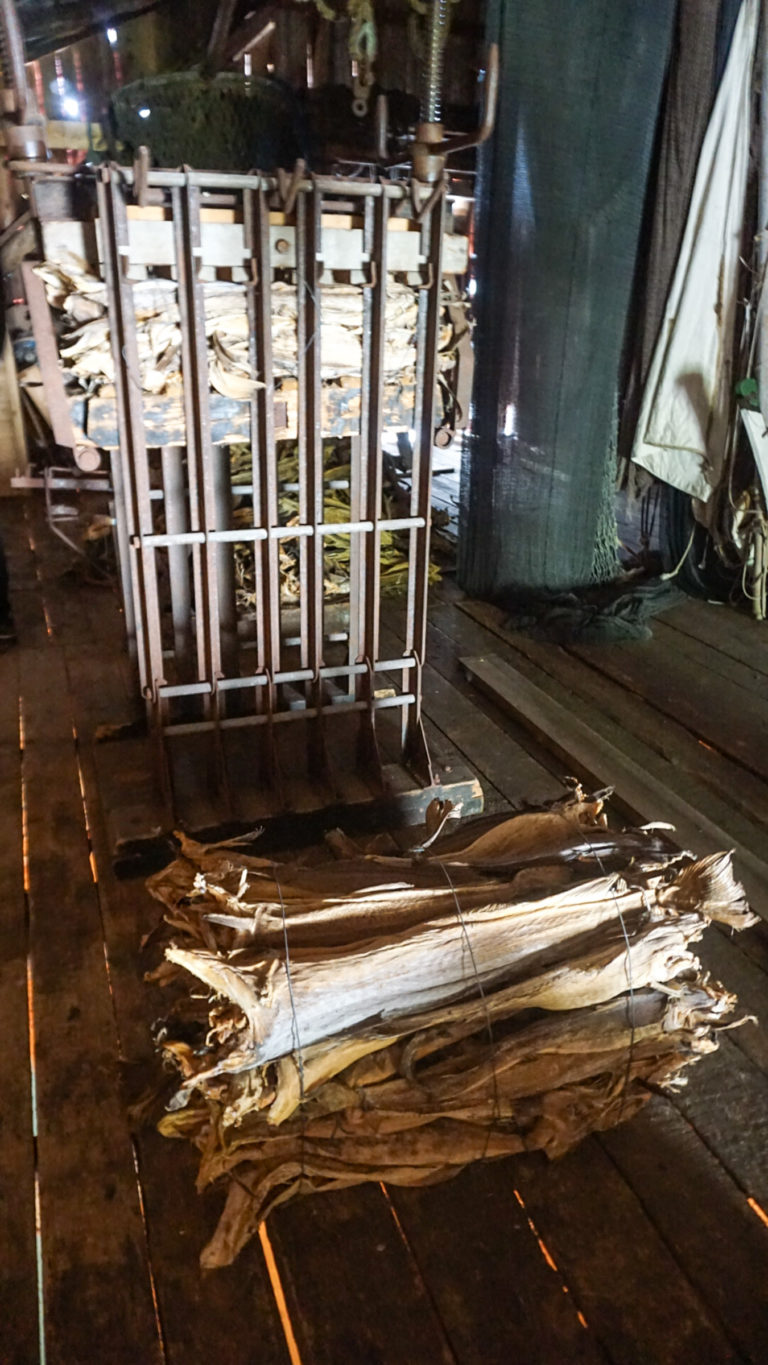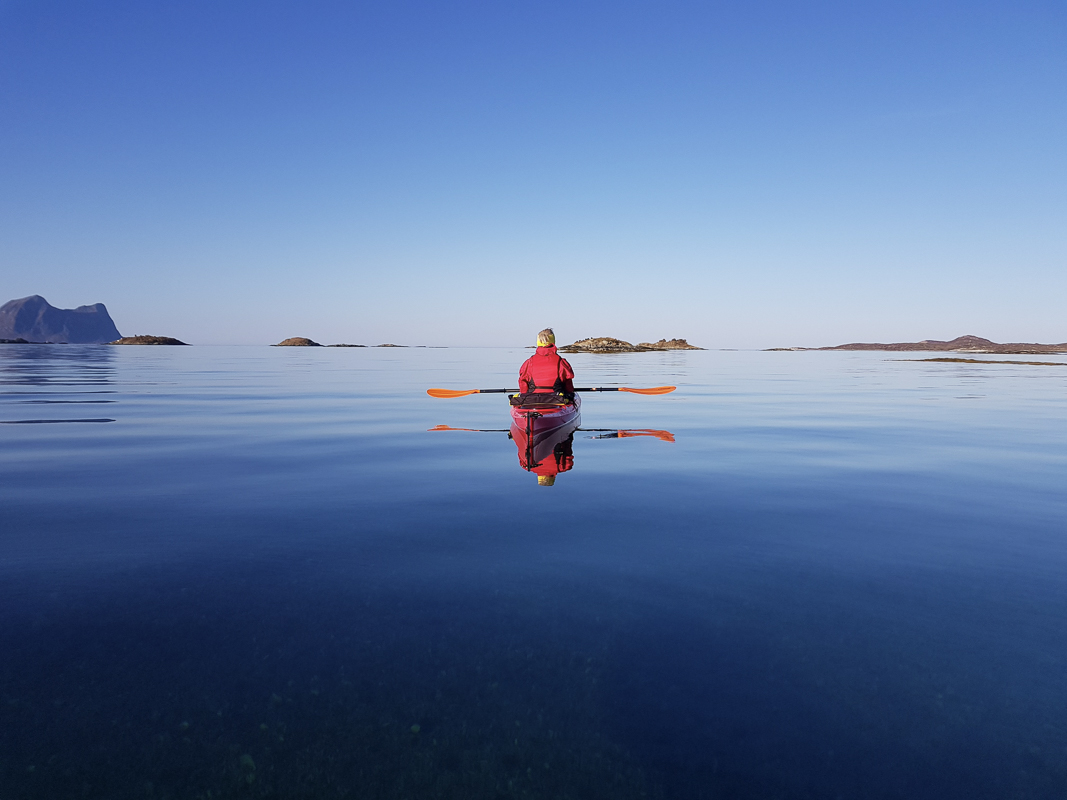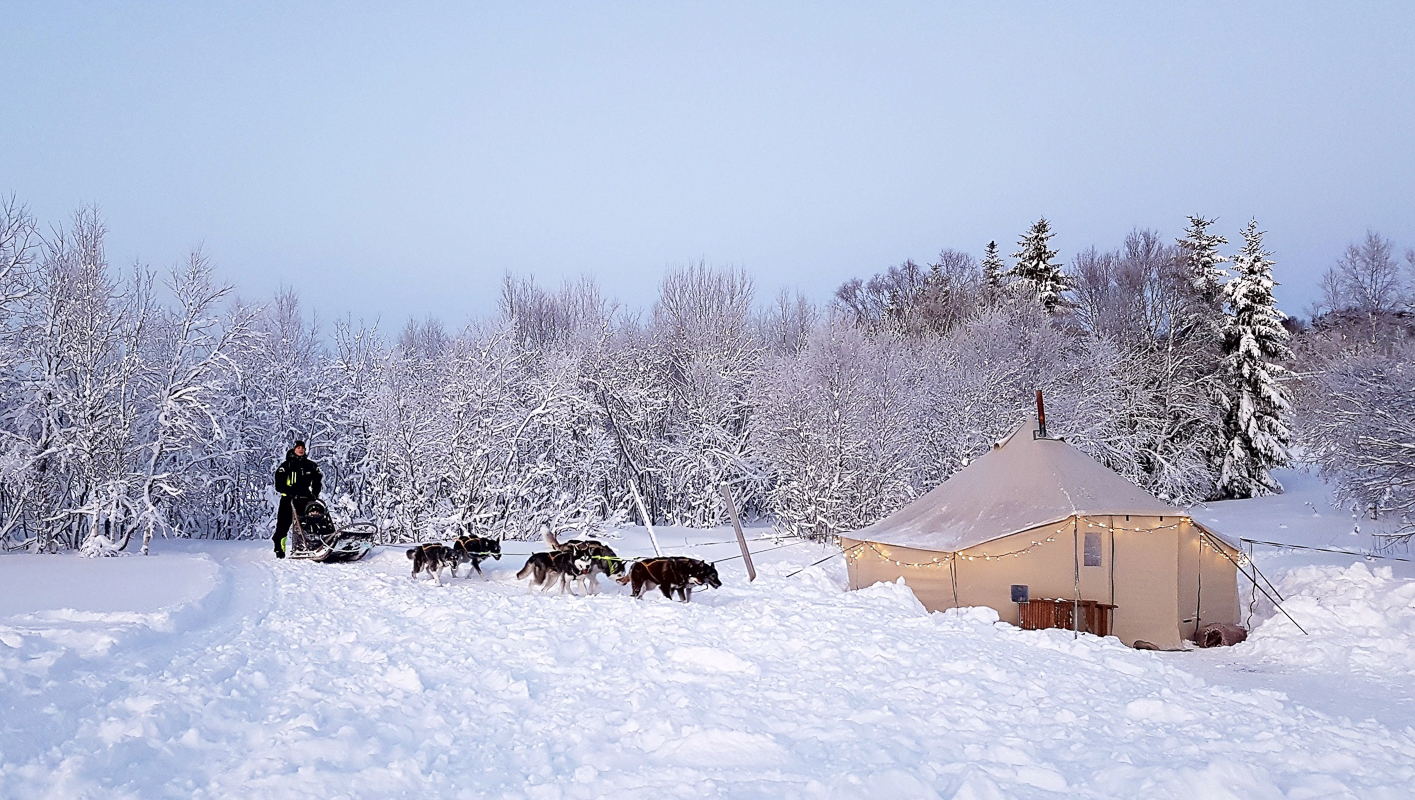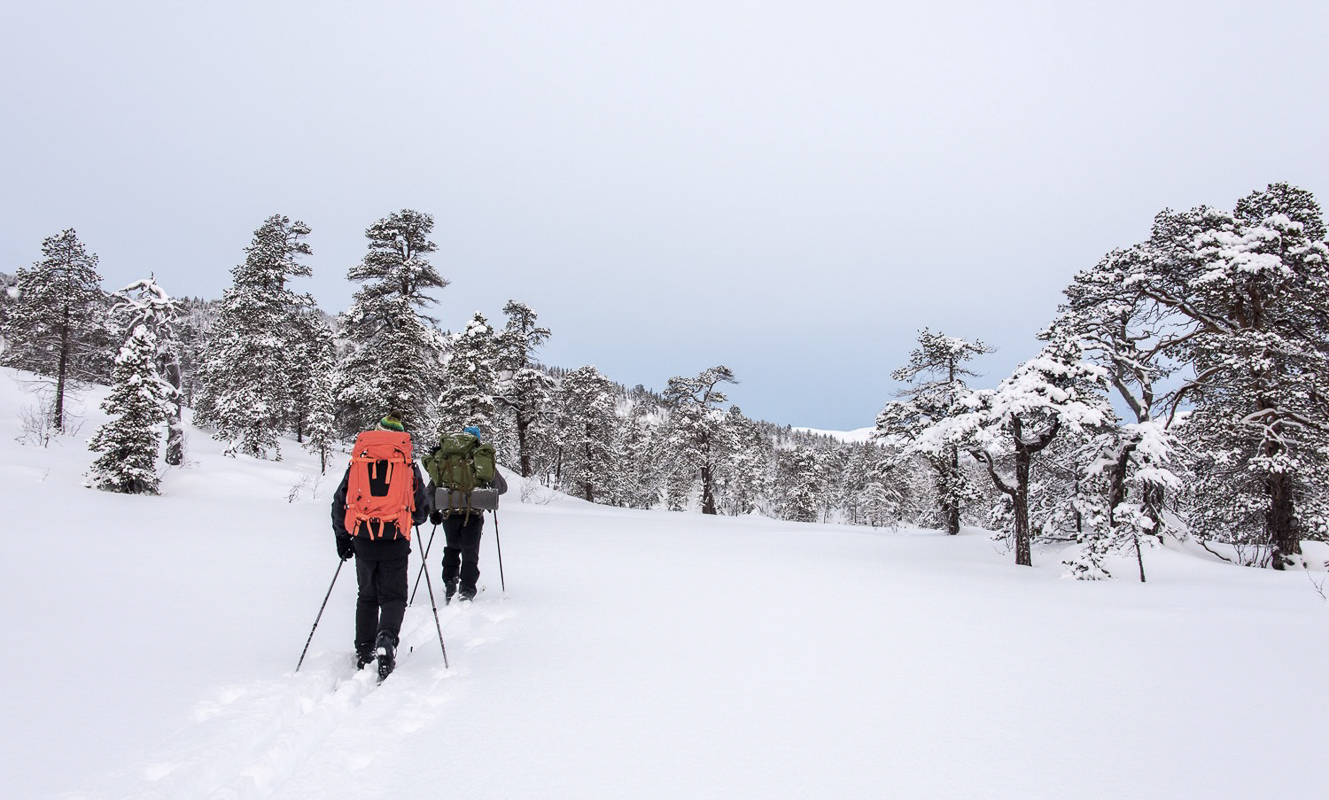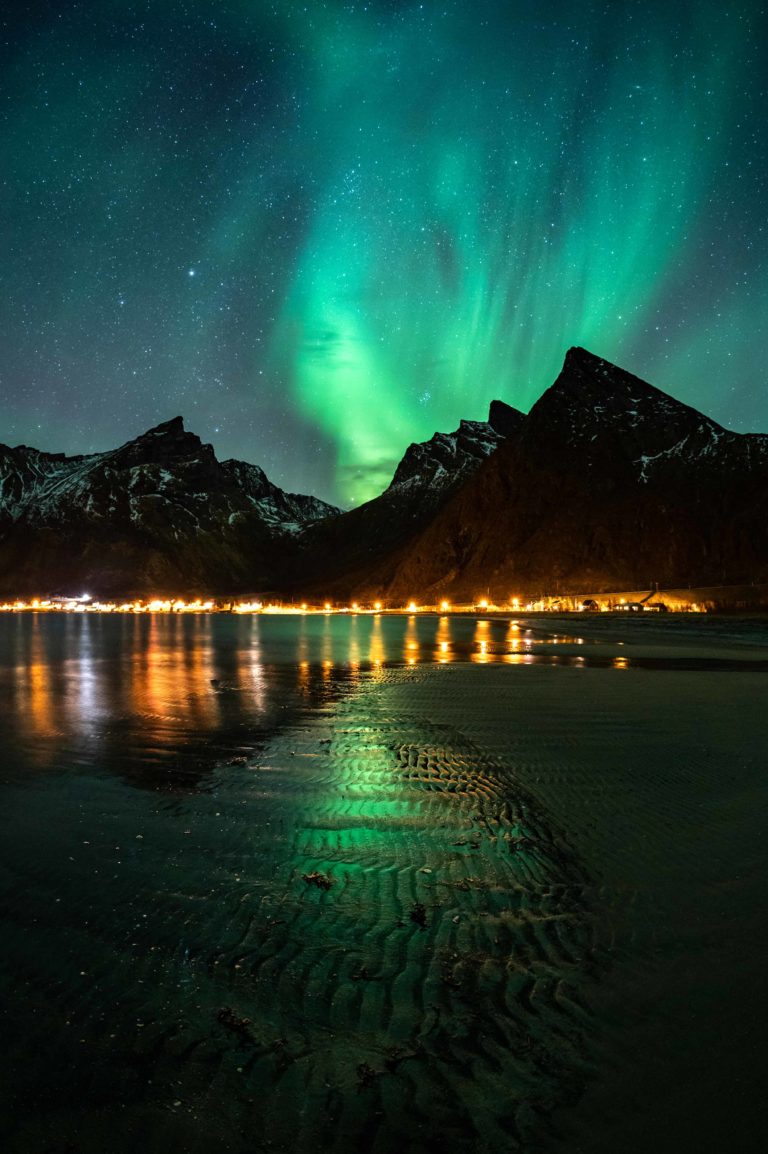When touring the fairy tale island of Senja, one should go the island’s southwestern tip for a small and charming museum in the picturesque fishing village of Skrolsvik. In an old, red warehouse on the shore, you are taken around a small, yet humorous and fascinating exhibit steeped in local tradition.
The halibut is a big bottom fish
The halibut – hippoglossus hippoglossus – is a large flunder living across the North Atlantic. It lives on the seabed, and catches fish and crustaceans within a limited area. Females can attain a length of more than 3 metres and weigh more than 300 kilos. Articles about giant halibuts in local newspapers are much read, but their flesh is coarse and not very tasty. For human consumption, they should be less than 100 kilos.
The old trading post was based on halibut
Skrolsvik is a sheltered port on Senja’s southwestern extremity facing the Andfjord. The Andfjord is not a classic fjord, but rather a wide bay of the Atlantic between the large islands of Senja, Andøya and Hinnøya. Large parts of the seabed are quite shallow, making it rich is marine life, there are even coral reefs around. Here you also find the spawning grounds for the halibut. In the 1870ies the trading post was founded in Skrolsvik. In one season, they could catch up to 28 000 kilos of halibut, creating a solid surplus. Halibut nets were introduced in 1936. They were very efficient, and only after a few years most of the fishing stock had been fished up. The nets were banned, and they returned to the more traditional halibut rig. The stock thus recovered.
The halibut is a sacred fish
In Norwegian, there are two names for halibut. In the north, we usually say kveita, which is derived from kvit – white. In south-eastern regions of Norway, it’s called hellefisk, derived from heilag – holy. This attests to the special status of this fish, and during the Catholic Middle Ages it was a favourite food during lent. It’s still referred to as a gudsfesk – a godly fish – and is compulsory food for Christmas. If a fisherman didn’t secure some halibut for Christmas, he would have to sit astride the boathouse in shame. Thus, one would take every precaution before fishing.
Keep the womenfolk away and use code language
Many things can scare the halibut away. Women should stay far away from the boat ahead of the crucial halibut fishing, as women in or close to the boat bring utur – bad luck. Steer your boat towards the sun when going out. Avoid talking about cows and horses. The fishing gear shouldn’t be mentioned by its right name, as one thought that the halibut could understand the word for “halibut rig” and elope. Also, the word “halibut” is a big no no, don’t let the fish understand the topic of conversation. Instead, creative euphemisms are found.
Haill means hooking up for luck
But women still played a crucial role in fishing. One measurement to ensure fishing luck is to practice a bit of marital harmony before setting off to the fishing grounds, referred to as haill. This expression was to begin with used exclusively when referring to a pre-halibut fishing rendez-vous but is now used and practised ahead of any kind of fishing. Of course, today the expression haill is an endlessly popular theme over a glass of beer, but back in the day this was taken very seriously.
Halibut is a delicacy
Halibut is a fish that you can eat poached or panfried, lately often cooked in the oven. Melted butter, potatoes and boiled carrots are traditional condiments. If you upgrade the butter to Sandefjord-style butter sauce, a beurre blanc or a hollandaise, you don’t go very wrong. The firm, tasty and mild fish meat is also excellently suited for fancy novelties like sushi, sashimi and ceviche. However, an almost forgotten traditional snack is kveiterekling – made from the fattiest part of the halibut around the finns. Cut in strips, it’s left to dry. It is enjoyed as a snack, and you end up licking your fingers with the delicious and healthy halibut fat. Even after the museum took over the place in the early nineties, kveiterekling was produced in the loft of the building.
Tour the museum
The museum is housed in a traditional red-painted brygge – a warehouse – used by the old trading post. Small displays explain the history of halibut fishing, complete with old black-and-white photos. Many popular beliefs are also well-explained. An interesting parallel is drawn to the Tlingit people on Canada’s Pacific coast. Their traditional pacific halibut fishing is equally rich in rituals and beliefs. Then head up the stairs to the storage on the top floor. Here you stumble across traditional wooden fish cases. Stacks of stockfish surround the stockfish scale, and there is fishing gear everywhere like halibut rigs with hooks and glass floats for fishing nets. It all smells of salt sea and fish. One can often get a little introduction, and then snooze around alone.
Finish the visit in the old shop
Across the village road, the old shop belonging to the trading post can be found. This is a traditional shop with buckets and fishing gear for sale hanging from the ceiling. When we were there, a local lady in her golden years chuckled; “oh, there is that hair tonic grandpa used to drink”. Waffles and coffee are often available, and you can buy fun little souvenirs, knitted socks and mittens and have a look at their second hand store in the back room. And most of all, it gives a feel of how the fishermen would stop by to buy necessities and occasional luxuries after having delivered the halibut to the Skrolsvik trader. The shop is not part of the museum, but opening hours often coincide with those of the museum.
Good to know about the Halibut Museum
This is a small, local museum, and should take you around half an hour to visit.
Skrolsvik is found on the southwestern tip of the island of Senja, in the municipality of Senja.
It is easy to drive to Skrolsvik from notably the regional centre of Finnsnes, which should take you a good hour. There is also a catamaran from the city of Harstad to Skrolsvik most days of the week.
Check the website for Midt-Troms Museum (Central Troms Museum – the organisation for many local museums – fun to browse around…)
Visit Senja Region operates an excellent website with many tips.
Along the southern coast of Senja, there are several small campsites with comfortable huts, guesthouses and resorts. Nothing is big, all is homely and cozy. Check Visit Senja Region’s website for an overview.
